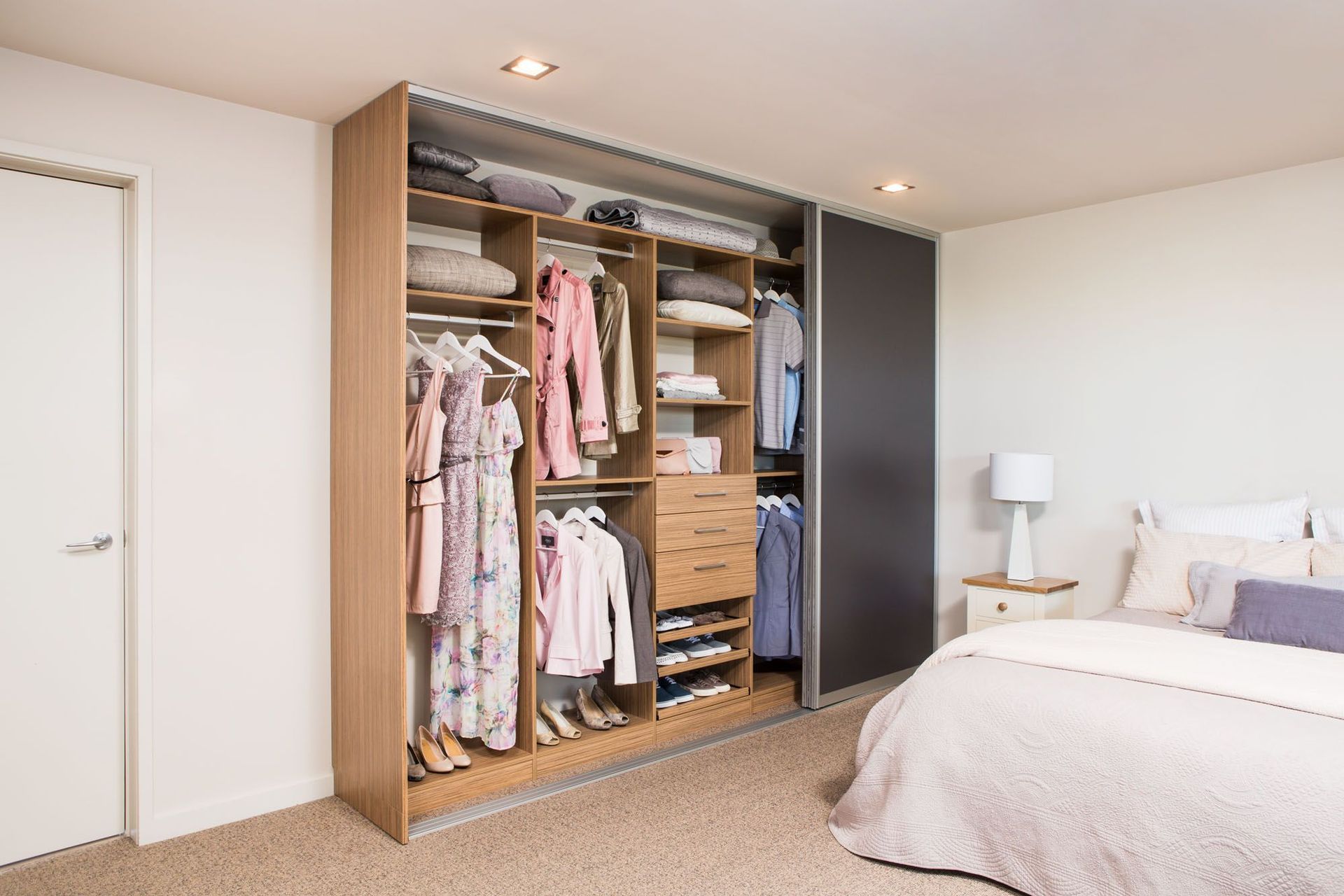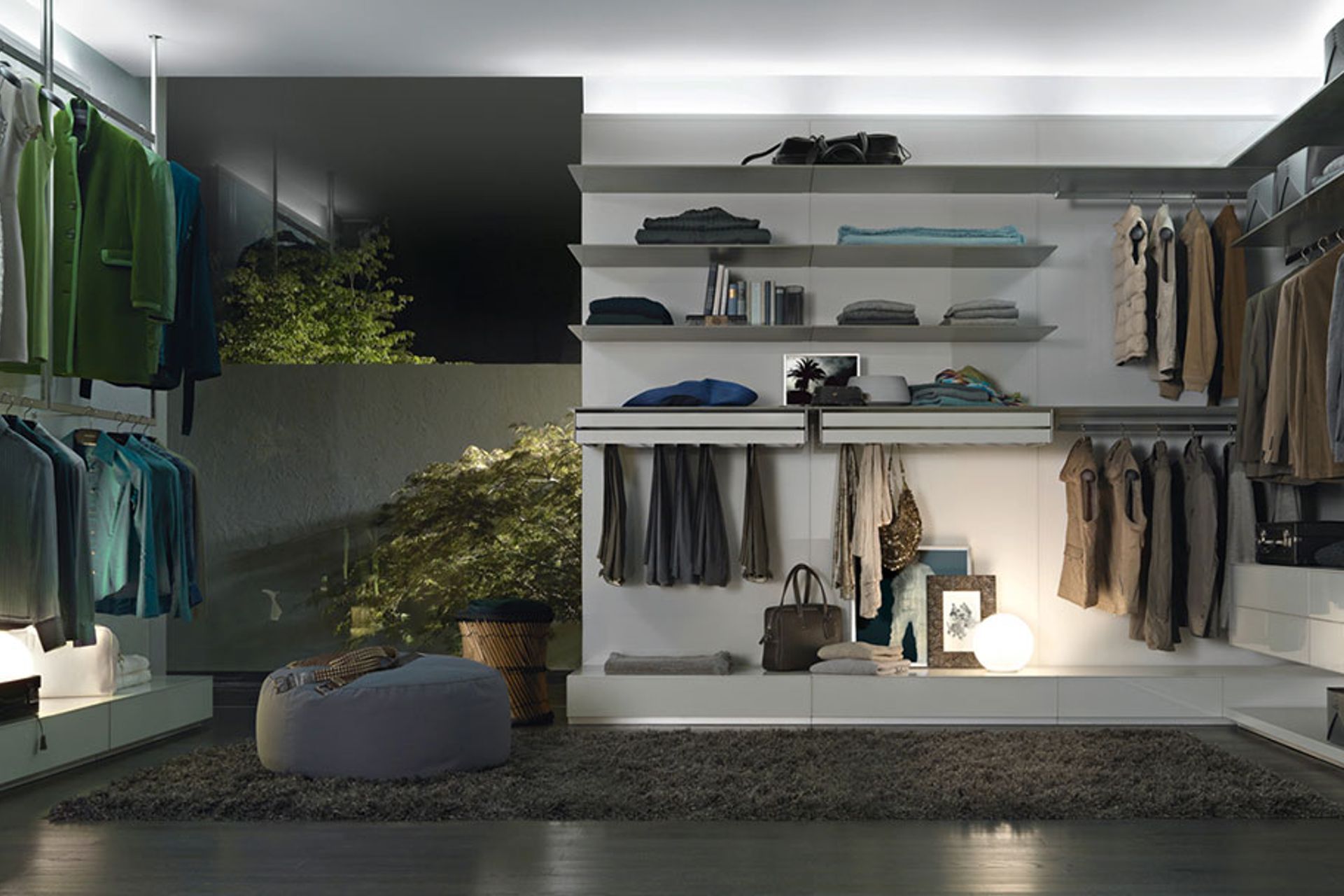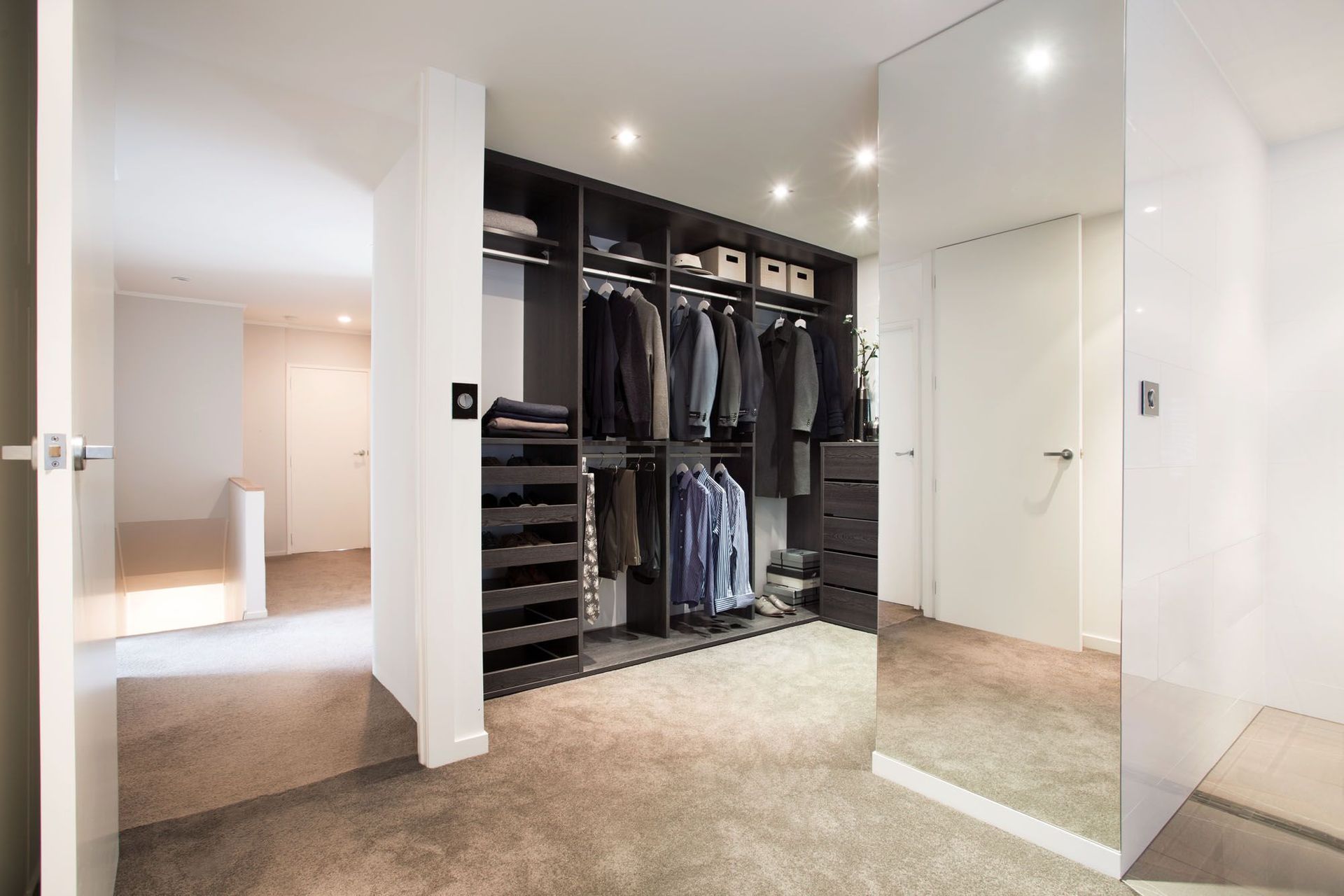Wardrobe Systems That Make Life Easier
Written by
09 November 2020
•
6 min read

“I have too much storage space” is not something many of us would hear or say too often. In fact, it’s more likely to be the exact opposite. Not to mention the moments when the clock is ticking, but we just can’t find what we want.
We have all been there.
Bringing more order into your wardrobe can solve several issues at once. You’ll never again have to endure the frustration of looking for an item that was supposed to be... “on that very shelf, I saw it yesterday!” An extensive wardrobe system features an abundance of space, conveniently split into shelves, drawers, racks and compartments. Once every item has its own dedicated place, it will never go missing again.
With organised wardrobe storage, all your outfits will be easy to reach and ready-to-wear. Moreover, you’ll be able to see everything, which eliminates the potential for items to find their way to the back of the wardrobe, never to see daylight again. Conversely, you will just as quickly be able to identify redundant items, ready to be sold or gifted away. Investing in a built-in—or even better, walk-in—wardrobe pays itself off.
The time when such amenities were reserved for the very wealthy is long gone. Organised, spacious storage is not a luxury, but rather a necessity. For a label collector, it provides an opportunity to show off the collection and admire its glam. For the majority of other users, it is, above all, a way of bringing efficiency to daily tasks. Whatever group you may belong to, being more organised is a rewarding process that brings back more energy. Fewer distracting elements lead to less clutter, subsequently to less stress and finally to a better feeling of wellbeing.
Define Your Wardrobe Needs and Layout
It’s best if you have the opportunity to build the room from scratch, leaving enough space for every detail. During the design phase, take into consideration the present and future state of your clothes, accessories and exisiting bedroom furniture. How much storage space do you need? Define the staples and build around them.
Before you start with impulse shopping, enthusiastically grabbing everything from new hangers to boxes of all sizes, stop and think for a moment. Make a list of all the items you have and organise them by category. Furthermore, you might separate them into sub-categories, by season, colour, or dedicated event. Once the list has been made, you’ll have your layout pretty much defined already.
- Dual-level hanging areas that incorporate tall compartments for trousers and dresses with short ones for shirts and tops are a must. If you proudly own a collection of handbags, give them a home where they won’t be stuffed over each other and possibly ruined.
- Pull-out racks for sweaters and other items that can be damaged or misshapen through hanging are also essential. So too for shoes as pull-out racks will maximise the amount of storage space and help you to keep your shoes in good condition.
- Remember too, that multi-panelled mirrors are an excellent addition to your wardrobe system for many reasons. Think dressing rooms in department stores, organised in a way to allow you to check all angles. Additionally, their reflections make the area feel larger. One good idea would be to put a mirror to every segment of the door, either inside or outside.

Where to Place A Wardrobe
If you’re not building a new home then a spare bedroom is an ideal place to transform into your very own walk-in wardrobe. If such a room is adjacent to your master bedroom or bathroom, it’s a jackpot. And since you’re sacrificing a whole room, make it regal. Organise the entire layout as a private sanctuary, a luxury dressing room worthy of royalty. Keep all the essential features, though, as you might decide to sell one day, and it could be useful to convert the space back to its initial purpose.
Depending on overall surroundings, you might find that some compromise is necessary in order to access all doors easily. Wardrobe door design makes an impact both visually and functionally. Sliding doors are more convenient than their swinging counterparts. At the same time, sliders are not always the prettiest solution around. Traditional interiors, for instance, require swinging doors. Aim for spaciousness above all, but not at any cost.
A Small Wardrobe
Even if you can’t afford a whole room to spare for a full-on walk-in wardrobe, you should still get creative with what space you do have. A galley-style closet behind a fake wall is not a bad idea. Or, keep it all transparent with glass display cabinets rather than solid doors. The permeable look will also make the entire space feel lighter and seem more prominent.
Finally, you can opt to simply upgrade your existing wardrobe, by repurposing every inch and setting up a new combination of inserts, shelves and drawers to keep the content evident and accessible.

Additional Storage Details
Woven, wooden or even plastic baskets will help you stay organised and keep all unsightly items out of the way. Plus, those can look great on shelves, bringing more style points to the overall setting.
If everything is displayed and visible, why not to do the same with accessories and jewellery? Introduce a wardrobe version equivalent to a gallery wall with wall units, and curate the exhibition of your favourite pieces. Not only it will look good, but you’ll also have those little pieces within reach, anytime.
If the existing wardrobe system is not enough and there is some floor space left in the middle, consider including an island with plenty of drawers. The surface will be useful as a dresser table, for folding, quick ironing, or you can even install a hidden makeup vanity inside the top.
When optimising your storage, look for a way to make it more breathable. The primary goal should be to free up floor space by getting rid of excessive drawers and heavy cupboards, downsizing bedroom furniture to beds and nightstands.

Lighting the Wardrobe Storage
Light is a crucial element of a dressing room, especially if the available area is tiny. Strategically placed fixtures can maximise the space you’ve got.
Small lights with sensors that react to opening the door/movement are quite useful. Downlights are strong and maybe unpleasant with harsh light that tires the eye and highlights all flaws. Pendant lighting is gorgeous and will boost glamour effects, but won’t help you see every corner inside.
LED strips, bulbs and lamps can be easily installed anywhere inside the wardrobe’s interior, around and under shelving. From a visibility point of view, this is the best solution.



